Nexus 7 (2013) - Mini Review
by Brian Klug on July 27, 2013 12:54 AM EST- Posted in
- Tablets
- Snapdragon
- Qualcomm
- Android
- Mobile
- APQ8064
- Nexus 7
- Android 4.3
Last year the Nexus 7 debuted with a Tegra 3 SoC, which for reminder consisted of a 4+1 architecture of ARM Cortex A9 CPUs, with the 4 A9s built on 40nm G, and the +1 “shadow core” A9 built on 40nm LP (TSMC’s 40 LPG process), accompanied by ULP GeForce GPU with 12 cores running at a max GPU clock of 416 MHz. The exact SoC was NVIDIA’s Tegra 3 T30L, which could run one A9 at up to 1.3 GHz and all A9s at up to 1.2 GHz.
Rather than the relatively logical upgrade path of going to NVIDIA’s Tegra 4 SoC (I’ve heard all manner of speculation about what happened there), the new Nexus 7 switches to Qualcomm’s APQ8064–1AA, a version with 4 Krait 300 CPU cores (yes, Krait 300, not 200) running at up to 1.5 GHz and Adreno 320 graphics. Rather than use a PoP and LPDDR2, this specific APQ8064 variant goes to PCDDR3L–1600 MHz instead, including 4, 4Gb discrete 1.35V SK-hynix DRAM devices off to the side (more on the opposite side of the PCB) adding up to 2 GB of RAM. Qualcomm's Snapdragon S4 Pro and Snapdragon 600 branding gets confused here, although Qualcomm is calling the APQ8064 inside the Nexus 7 (2013) S4 Pro, it's more like an underclocked or lower binned Snapdragon 600.
At this point APQ8064 is probably the most well understood SoC in recent memory (so much so that I’m pining for devices to include something different just from an academic perspective) so I’ll spare the very verbal discussion about its performance.
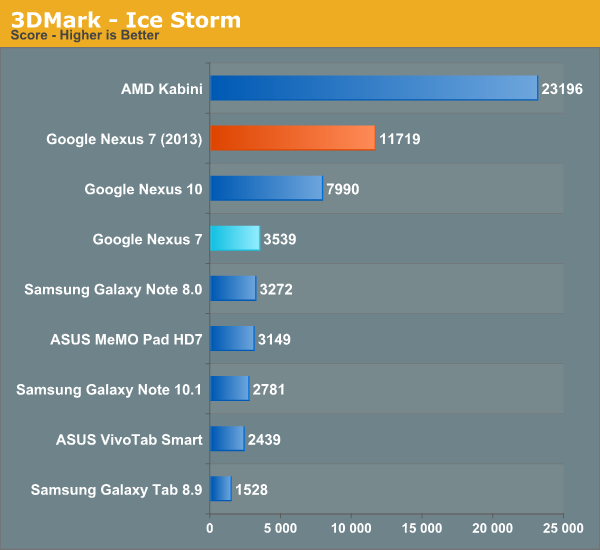



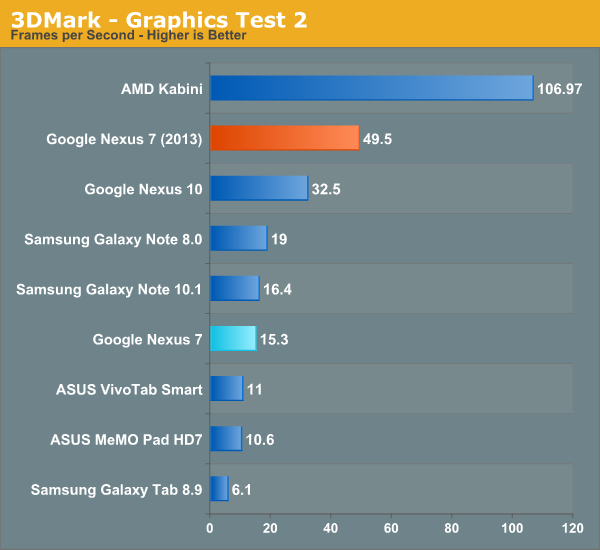
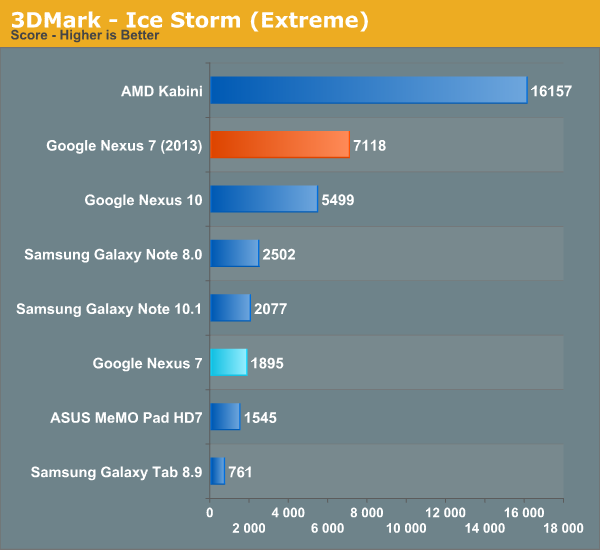

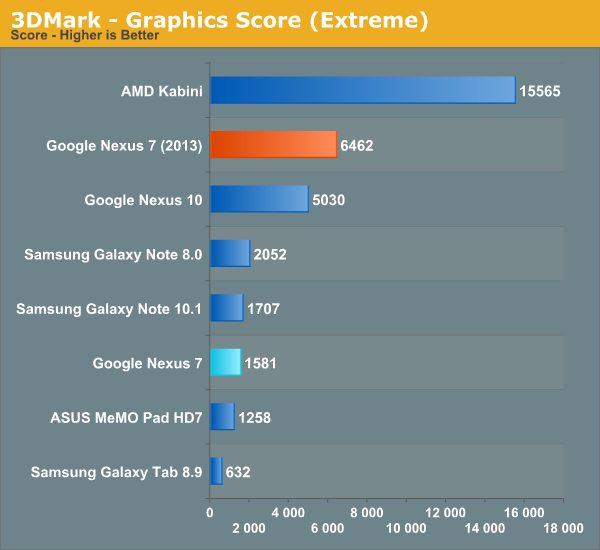

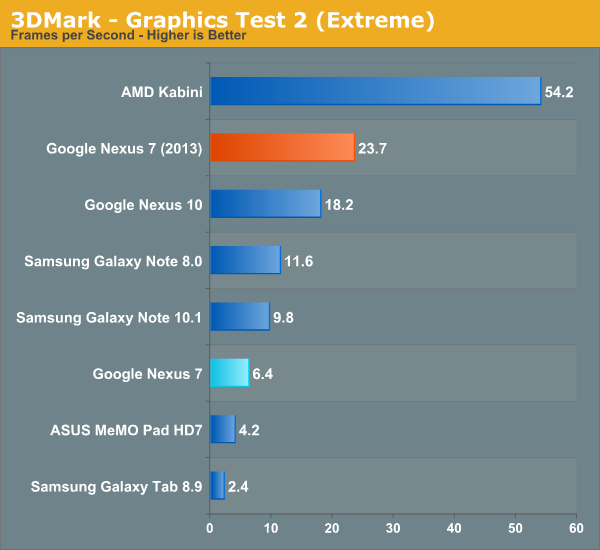


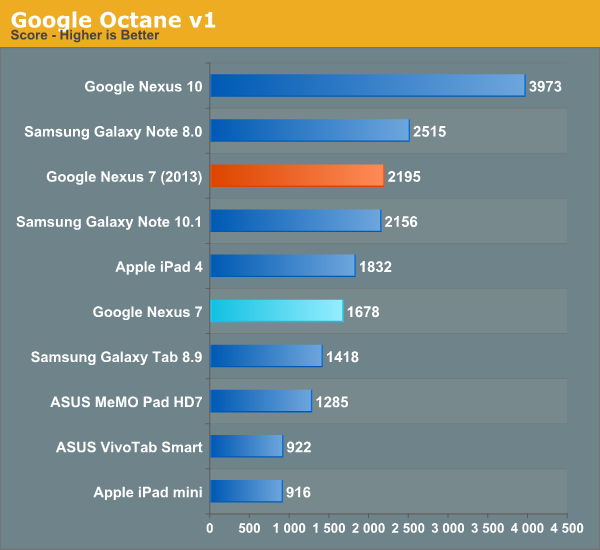
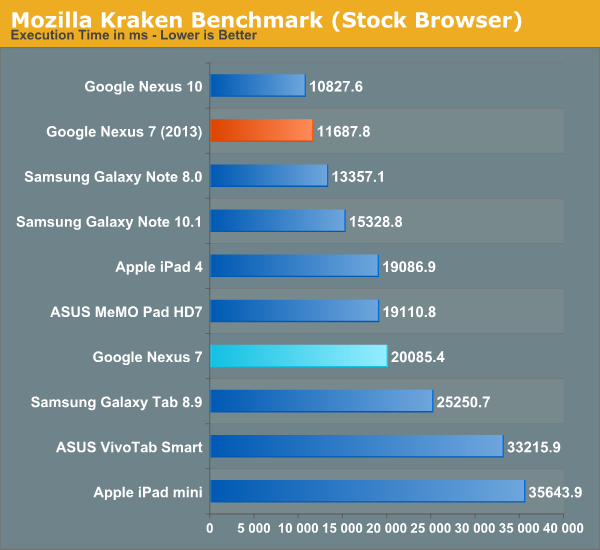
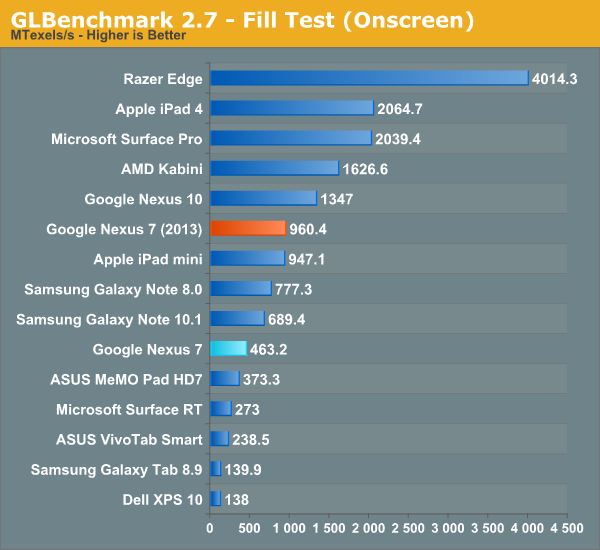
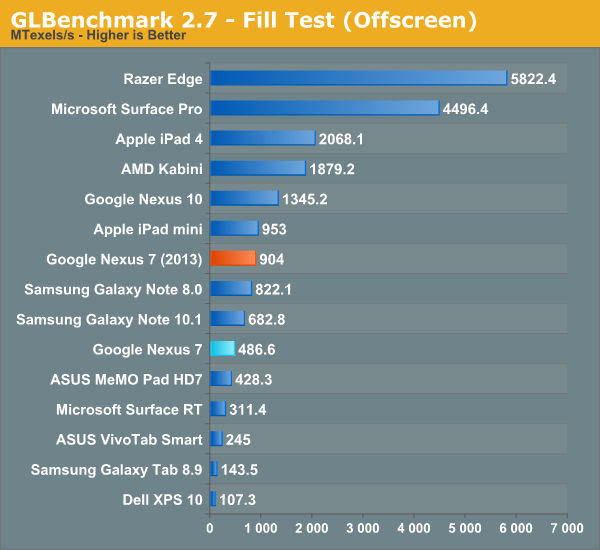
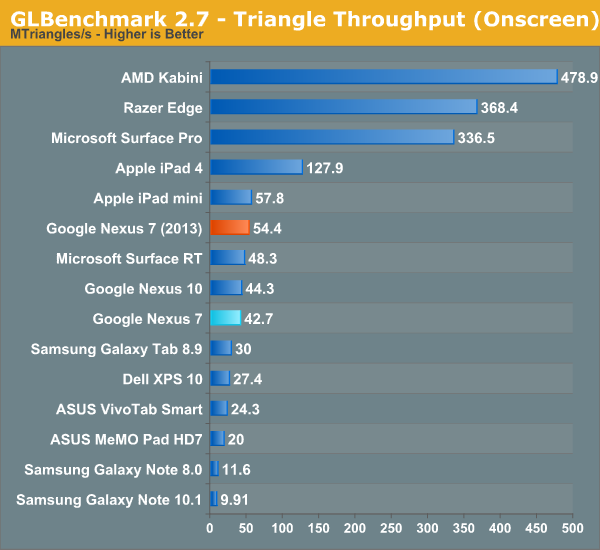
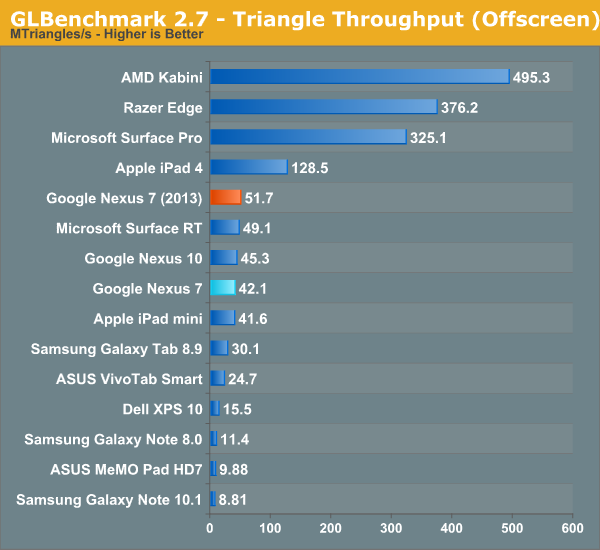
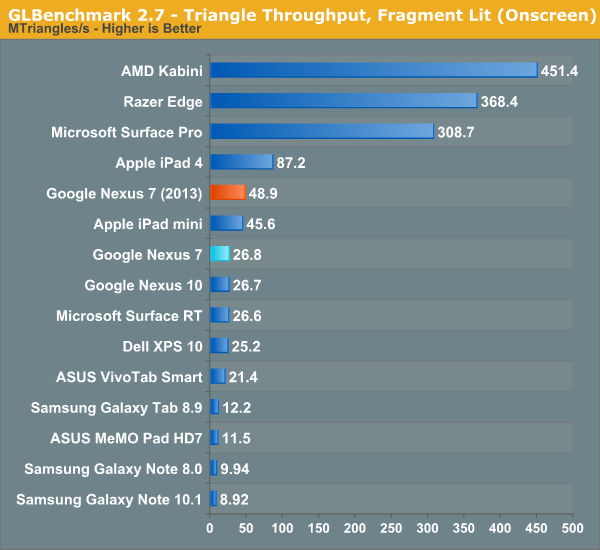
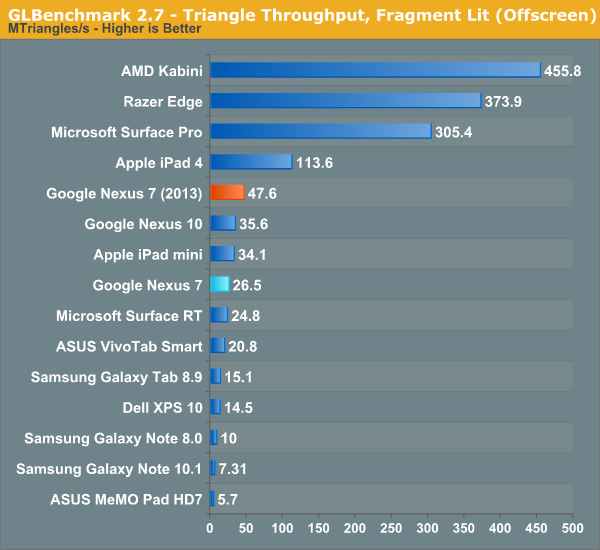
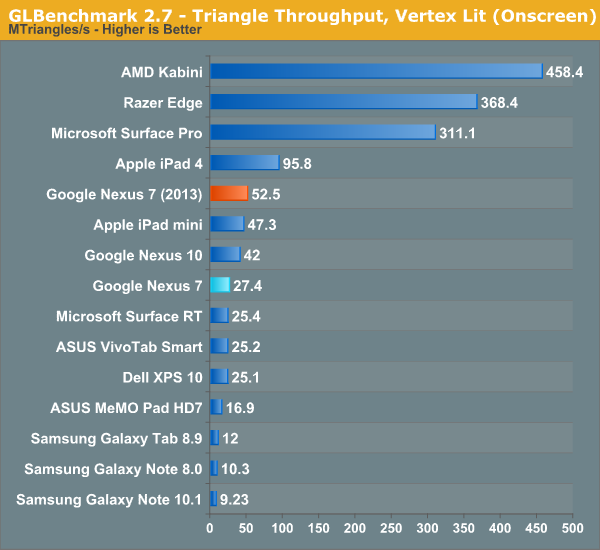
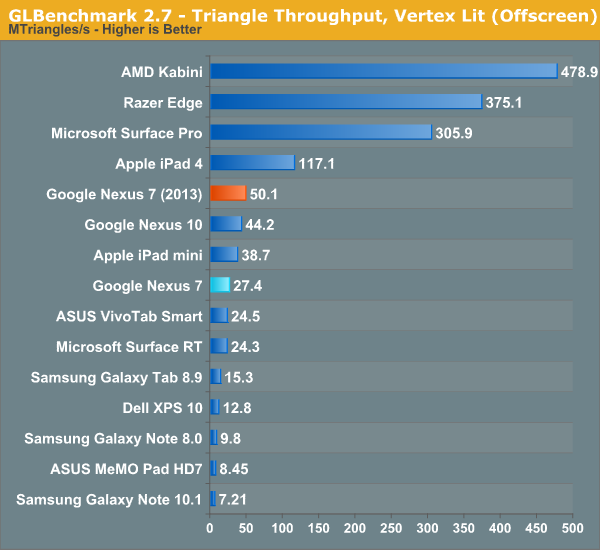

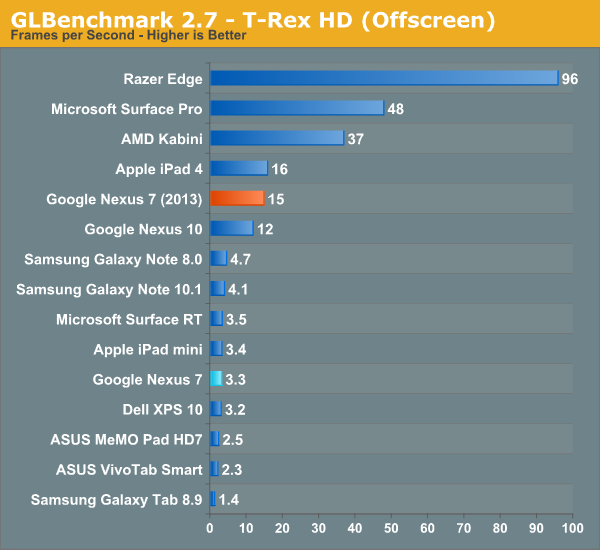
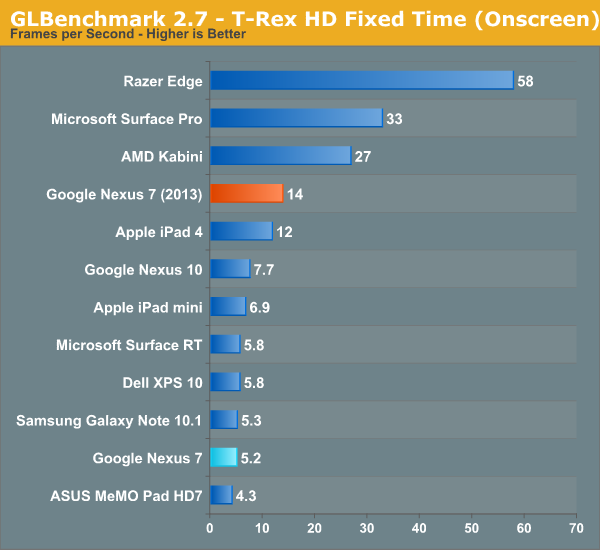
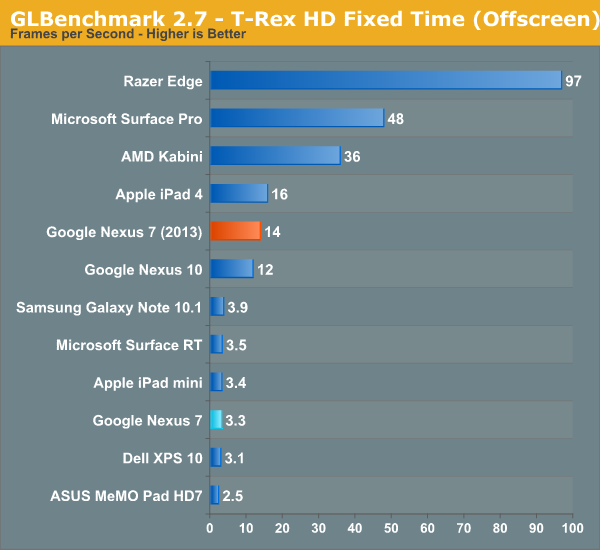
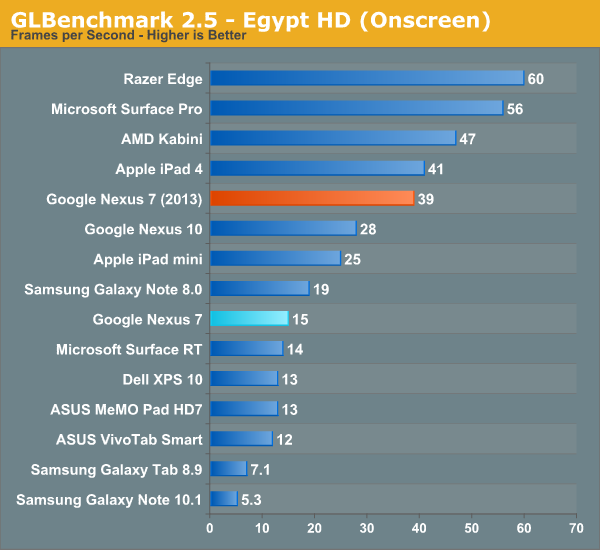
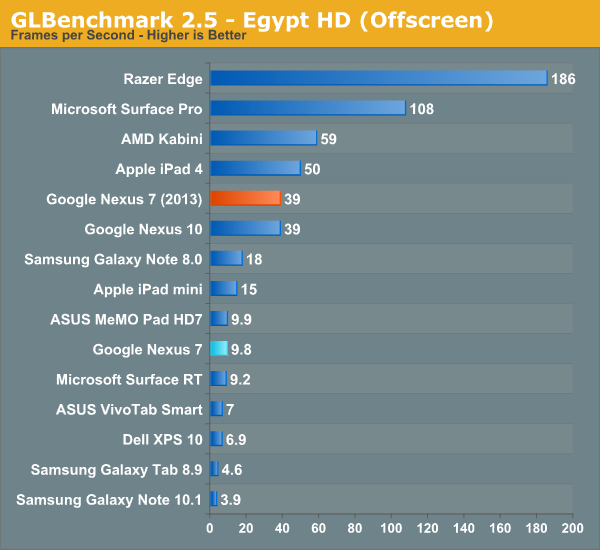
Suffice it to say, moving from 1.2–1.3 GHz Tegra 3 to 1.5 GHz APQ8064 represents a big jump forwards in performance. Google claimed 1.8x improvement on CPU performance, and 4x improvement on GPU, which gets validated pretty much consistently through the benchmarks. I never felt like Tegra 3 was a slouch by any means (performance was more I/O bound on the OG Nexus 7, which we’ll talk about in a moment), but the new Nexus 7 has ample performance for the considerable increase in screen resolution.
Dat eMMC
It wasn’t any secret with the original Nexus 7 that much of the real world performance was gated by storage I/O throughput – we wrote about it after all – and storage performance was a common complaint while multitasking on a few other previous and similar era ASUS tablets. Most of the time performance was acceptable, and for $200 you can’t complain too much about things, the issue was that further on in the life of the tablet performance began degrading somewhat notably, leading to complaints.
Obviously the first thing I did on the Nexus 7 (2013) was run Androbench with the same 100 MB settings to test and see what out of box I/O performance looks like. Things are much better with the new Nexus 7 than they were with the previous one, so at a high level all is good.
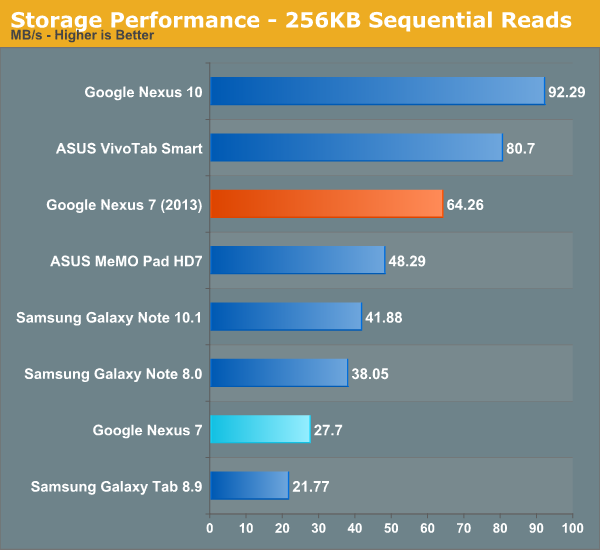
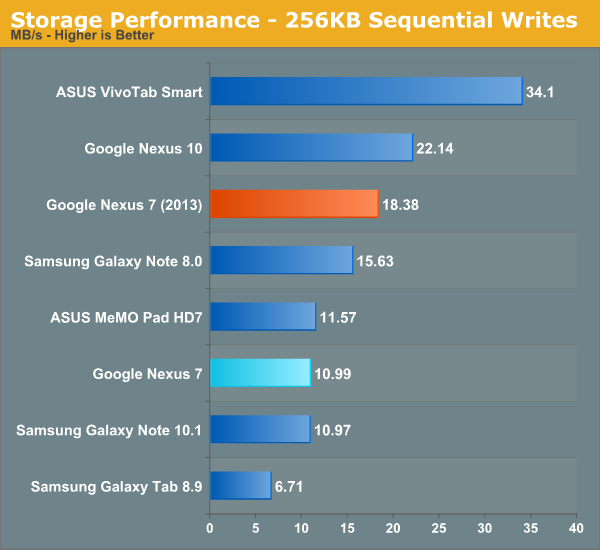
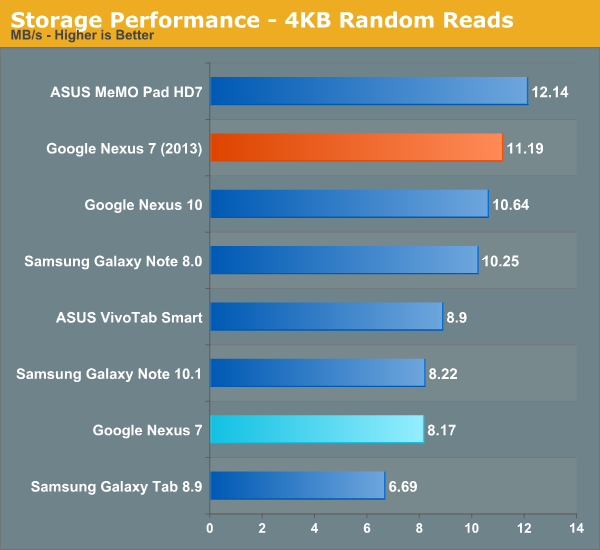

The story actually is a bit more involved however. One of the big problems was that the slowness which occurred with the prior Nexus 7 took device aging to appear – it was great for the first few months, but after you started loading it things tailed off. The new Nexus 7 (2013) with Android 4.3 includes support for fstrim, essentially idle garbage collection, which TRIMs the eMMC when a few conditions are met – the device is idle, screen off, and battery above roughly 70-percent. I’m told that TRIM support has been part of the eMMC standard since around version 4.2, it was just a matter of enabling it in software. The result is that the new Nexus 7 shouldn’t have these aging affects at all. Better yet, fstrim support has also been added to the old Nexus 7 with as of the Android 4.3 update, so if you’ve got a Nexus 7 that feels slow, I/O performance should get better after fstrim runs in the background. I'm checking on whether the other Nexus devices have also had TRIM support added. I would consider the slow storage aging problem fixed as of now, and Google took the eMMC and storage I/O performance issues with the previous Nexus 7 to heart for this version.


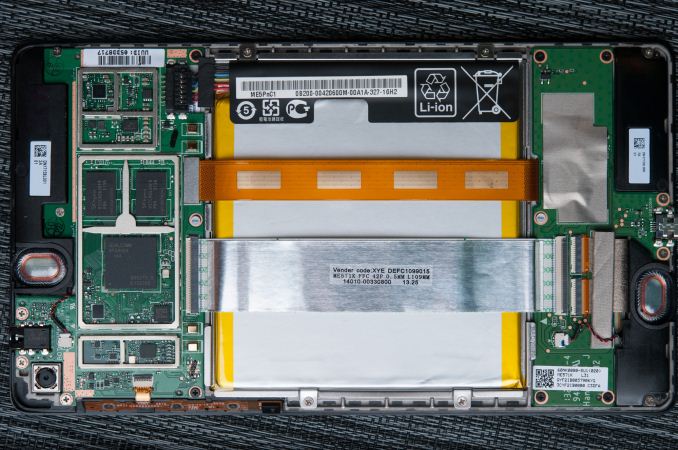
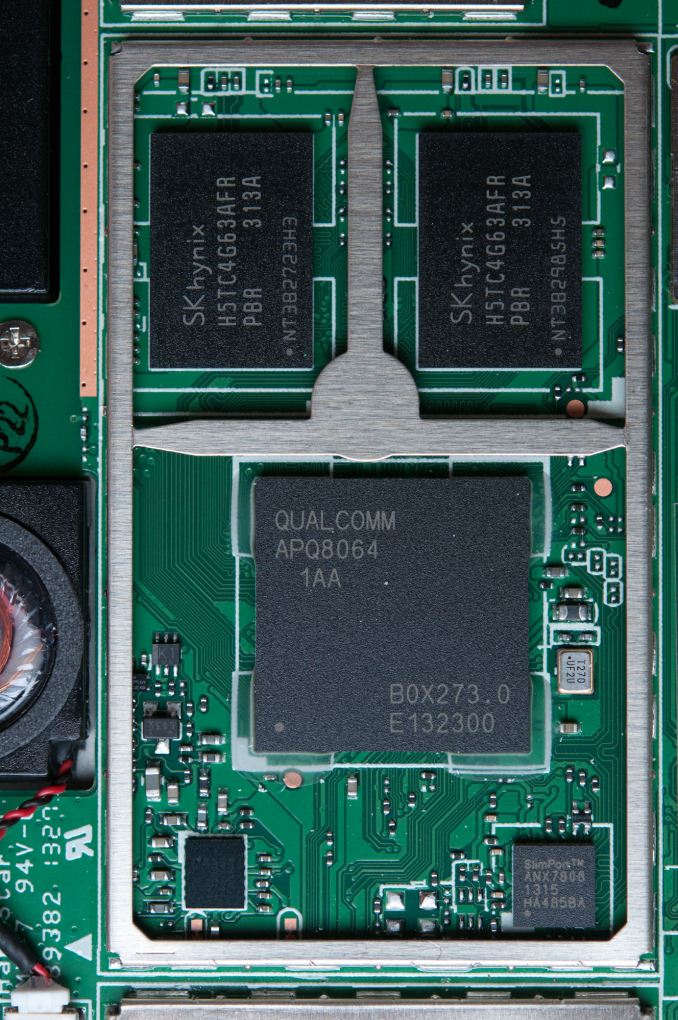














252 Comments
View All Comments
phillyry - Tuesday, July 30, 2013 - link
Anand also mentioned that it's possible for the different capacities to have different eMMC controllers.However, they didn't last year.
Would be good to know for this year's models.
Broo2 - Saturday, July 27, 2013 - link
There should not be a difference and the 16GB/32GB flash is used only for storage.phillyry - Tuesday, July 30, 2013 - link
Did you read the article?Brian addressed the real lagging issues that Nexus 7 gen. 1 users have been having. He stated that it was likely caused by the storage I/O and that it should be fixed via software.
Point is, storage is usually the performance bottleneck of a system.
et20 - Saturday, July 27, 2013 - link
Thanks for the review.I really appreciate it much more than your standard review format.
I only read those if I'm 90% sure I want to buy the product because they are too long.
phillyry - Tuesday, July 30, 2013 - link
+1Ya, we should have this short, sweet, and immediate reviews initially for all major products.
TareX - Saturday, July 27, 2013 - link
I enjoyed having an Nexus 7 (till it became unbearably buggy, slow, and eventually broke with no trauma)... but I must say, walking around with two Androids is extremely cumbersome. Having apps and files scattered between two devices is annoying... This lead me to the conclusion that I need to invest in a phablet. It comes with the added advantage of excellent battery life on your one and only Android. That said, a viable alternative would be an affordable version of ASUS' Padphone product. But their screen dock is ridiculously overpriced, I can only see a +5.5" phablet as my only choice here. I hope the HTC One Max comes with a split-screen functionality so I wouldn't have to go for the Note III.torp - Saturday, July 27, 2013 - link
How about comparing wifi signal between the nexus 7 old and nexus 7 new? There are spots in my home where the old nexus 7 simply doesn't work, and it's not a big home.Brian Klug - Saturday, July 27, 2013 - link
Good question, I was never a huge fan of the Azurewave WLAN combo inside the original Nexus 7, I believe WCN3660 and its front end might be better. I would need to compare FCC disclosures and do some testing to find out, unfortunately most mobile devices are pretty constrained, and perform around the same (outliers being those with poor enclosure designs).-Brian
torp - Sunday, July 28, 2013 - link
Oh forgot an important data point: i also have an iPad 1 and that one has no problems with wifi anywhere in my home... so basically I could say the nexus 7 old's wifi was a bit crap :)zepi - Saturday, July 27, 2013 - link
When you do a battery life test, could you run one test at much higher brightness level than the standard? On my 3rd Gen iPad I've noticed that the device really struggles with max brightness setting that is more or less required when using the device outside in sunshine.Unlike often far too hefty laptops, people actually carry their tablets around want to use them things on their patios, balconies and outdoor cafeterias.
Otoh, it's not just the peak brightness, but overall visibility and readability of the screen that'd need to be normalised for such testing. Contrast ratios of screens can vary greatly under plentiful exposure to external light, as manufacturers employ different coatings and "clearblack" technologies, not to mention oled vs tft etc.